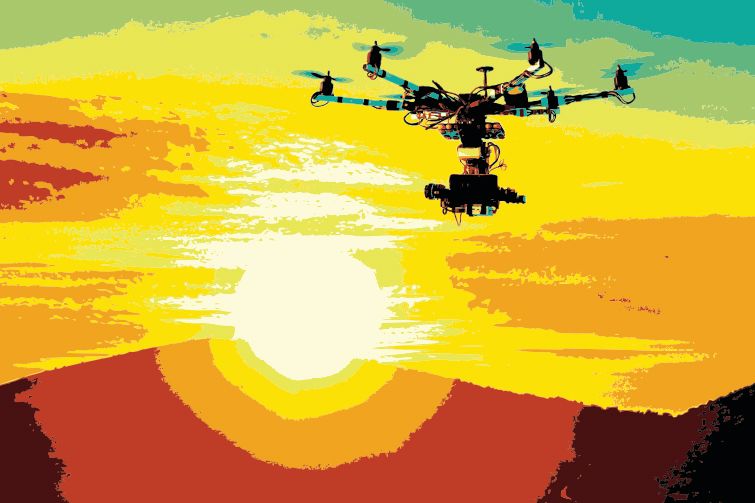The Most Effective New Weapon in the Avalanche Wars Could be the Humble Drone

Image: Shutterstock
Let's face it: people have been doing some pretty scary things with drones.
First, there was Bart Jansen. After his cat, named after one of the Wright Brothers, was run over by a car, the Dutch artist took Orville to a taxidermist who gave the flat-lined feline a tenth life as a catcopter. Then there were the Finnish farmers who mated a chainsaw with an octocopter and gleefully filmed it decapitating snowmen, de-icicling eaves, and topping towering pines.
It was only a matter of time before an entrepreneur added TNT to the mix.
For that, credit Brent Holbrook, a remote-control nerd who was already messing around with quadcopters and hexacopters in early 2014 when he was inspired to action by the East Vail avalanche that killed the grandson of Vail’s founder, a friend.
“How can I put this passion to use and maybe stop a future situation like this from happening?” Holbrook recalls asking himself after the tragedy. The answer: Mountain Drones, a start-up Holbrook founded with fellow Vail ski-bumming roommates Robert Blank and Warren Linde. At first, the trio had only a vague idea of where they were headed, but after talking to experts and building prototypes, they pitched their big idea—equipping ski patrols with pilotless copters to deliver dynamite charges—and were accepted into the Telluride Venture Accelerator’s five-month program for early-stage entrepreneurs. Born in Vail, Mountain Drones High Alpine UAV Solutions took flight in Telluride last year.
In ski resorts, avalanches are controlled with “bombs” (charges filled with a mix of TNT and an even more powerful explosive known as PETN), which patrollers chuck onto unstable slopes. Not surprisingly, deploying avy bombs can be dangerous. In 2010, a ski patroller at Jackson Hole died doing it. In 2009, an avy helicopter in British Columbia crashed (all survived). Some ski areas use vintage Howitzers from WWII; the Washington Department of Transportation uses an actual M60 tank. Why not enlist a drone? Strap a charge to the little buzzard, send it off and—kablooey!
“Everyone was like, ‘No, this is insane, this is never gonna happen,’” says Blank, the company’s chief technology officer, who adds that Mountain Drones has demonstrated—in tests, using dummy charges—that UAVs can deliver bombs safely and accurately. CDOT is interested. So are other avy experts.
“If you could do what we do now with [humans] and helicopters and do it more precisely and cheaper, that would be pretty useful,” says Ethan Greene, director of the Colorado Avalanche Information Center.
The National Ski Areas Association is a bit more skeptical.
“At this point, Amazon can’t even deliver a book to your back door,” observes NSAA president Michael Berry.
In other words, drones will begin bombing Vail ... when cats fly.






































